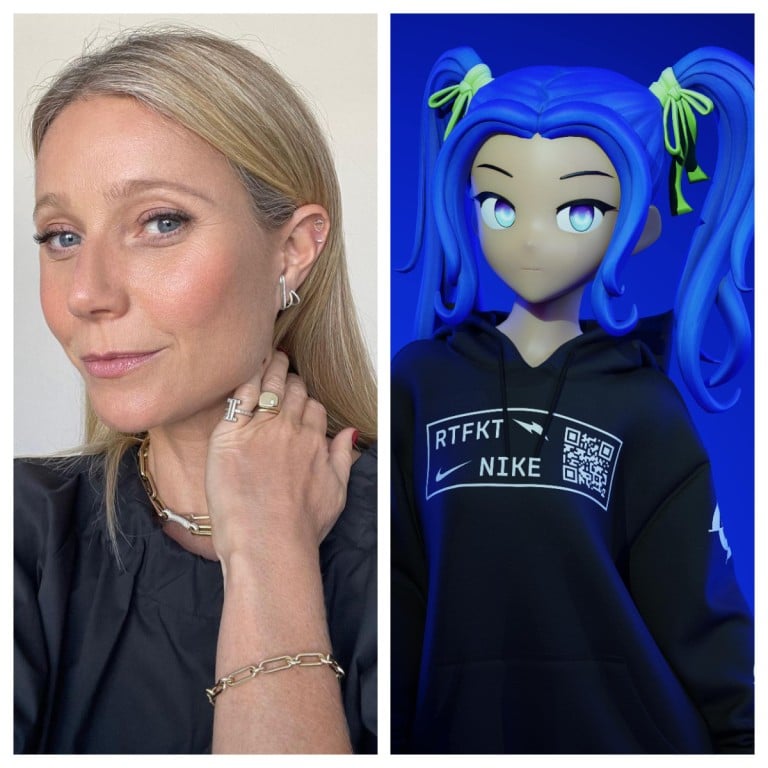Why is everyone from Neymar to Snoop Dogg getting an NFT avatar? Madonna, Gwyneth Paltrow, Jay-Z and Jimmy Fallon are among the celebs jumping into the market for digital art to use as a profile pic

- CryptoPunks, Bored Ape Yacht Club, Mutant Ape Yacht Club, Azuki and CloneX are the hottest PFP collections according to statistics on OpenSea, a secondary marketplace for NFTs
- Nike’s RTFKT CloneX collection was created by digital artists like Takashi Murakami, known for his collaborations with Supreme, Louis Vuitton, Hublot and Kanye West
Head over to Gwyneth Paltrow’s Twitter profile and you might think you’ve landed on a fake account. At last check, the actress’ profile picture was a hexagonal frame containing a graphic of a woman with purple hair and a floral dress. But the little blue tick, and the 2.7 million followers, leave no doubt – this is indeed Paltrow’s account, among the first to use the recently released feature for members of the Twitter Blue subscription service, allowing NFTs (non-fungible tokens) to be used as avatars.
You can see various examples of this throughout the internet – funky apes, pixelated punks and anime avatars used by celebrities like Jay-Z, Neymar and Jimmy Fallon. But why are celebrities substituting their highly recognisable – and therefore valuable – faces with cartoons?

In Paltrow’s case, she is on a mission to encourage women to break into the so far male-dominated world of cryptocurrencies and blockchain. But more widely, digital art collectibles are being proudly embraced as virtual identities by anyone keen to show allegiance to the generative art renaissance shaking up the art market.
What is an avatar or PFP?
CryptoPunks, Bored Ape Yacht Club (BAYC), Mutant Ape Yacht Club (MAYC), Azuki and CloneX are among the trendiest PFP (that’s 2022 speak for profile pic) NFT art collections on the ethereum blockchain network, according to statistics on OpenSea, one of the world’s largest secondary marketplaces for NFTs.
“These five NFT avatar collections have collectively generated approximately US$6.9 billion in trading volume since January 2021,” reveals Pedro Herrera, head of research at Dappradar, a decentralised application tracker. “In fact, the influence of PFP NFTs is so dominant in the market that they make up nearly 75 per cent of the trading volume of all NFTs on the ethereum network.”

Each of these collections is a family of quirky characters, generated using artist-created traits that are then assembled in random ways by a computer algorithm. Every character produced has one or more particular features, the combinations of which make them distinctive and collectible. For example, in the CryptoPunks PFP NFT collection, there are 6,039 male Punks and 3,840 female Punks, 286 of which come with 3D glasses and 128 of which have rosy cheeks. Throw in a bunch of other quirks and you get a unique combination of traits, making every Punk unique.
The birth of pixel art
